Santa Maria Asphalt Refinery Community Air Monitoring
Petroleum refineries are among the largest stationary sources of air pollution in California. In recent years, community concerns over emissions from refineries and the potential for community exposure to air contaminants, both from routine facility operations and potential releases due to upset conditions or emergency situations, has increased. Assembly Bill (AB) 1647, passed in 2017, contains requirements for fenceline air monitoring and community air monitoring for refineries operating in California by January 2020. District Rule 364 was developed to address and implement these requirements for refineries in Santa Barbara County. At present, the Santa Maria Asphalt Refinery is the only refinery located in Santa Barbara County.
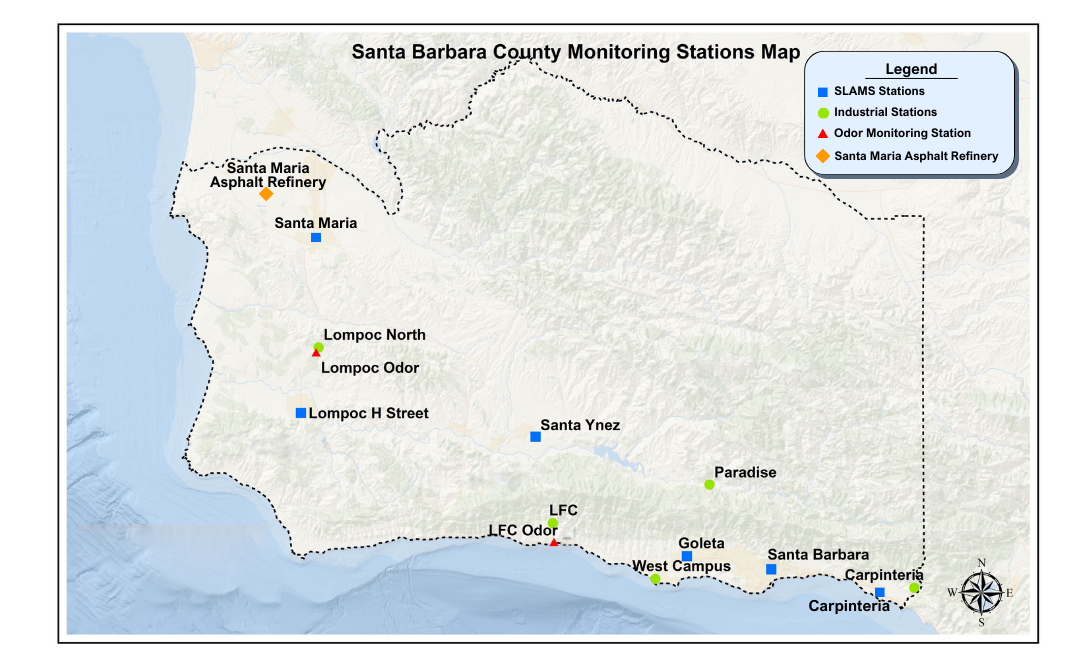
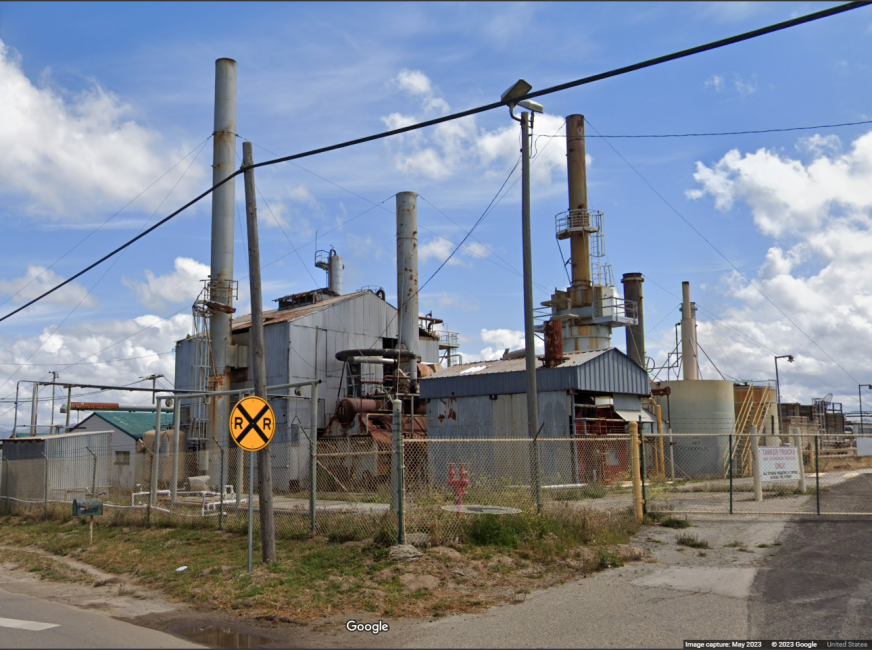
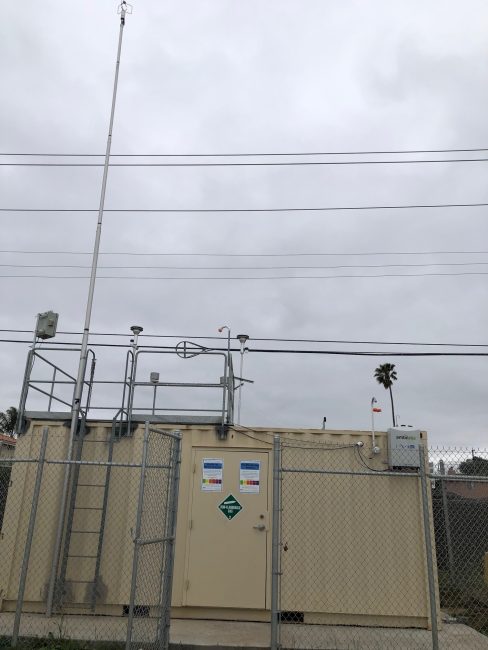
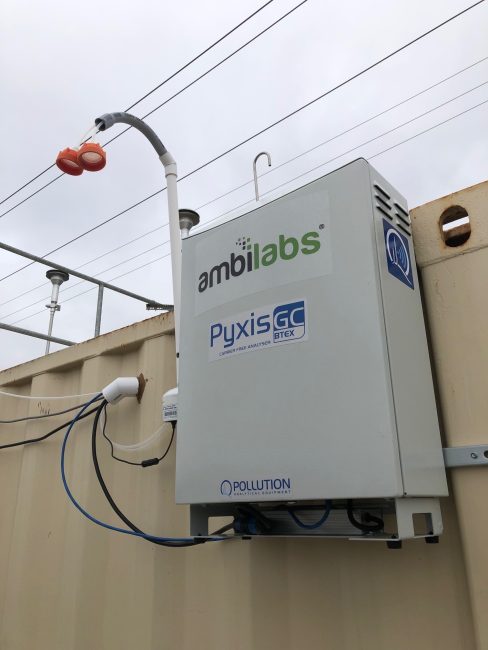
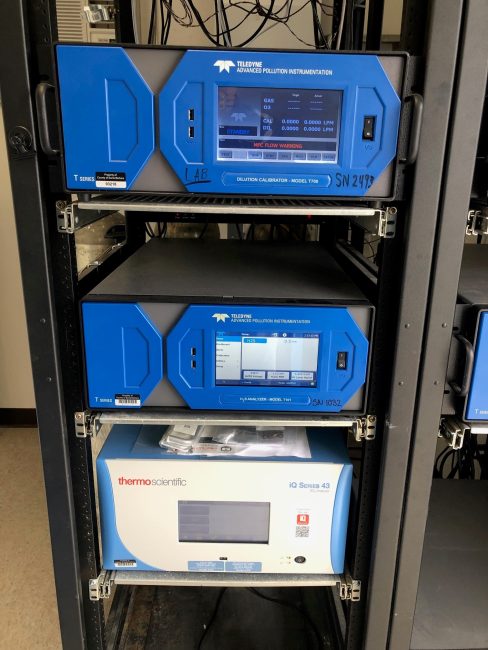
Refinery Community Air Monitoring Data
The Santa Maria Asphalt Refinery is currently nonoperational.
AB 1647
Petroleum refineries are one of the largest stationary sources of air pollution in California. The processes used to produce refined products from crude petroleum result in the emissions of criteria pollutants and toxic air contaminants.
Community concern over emissions from refineries – emitted through routine processes or emergency situations – and the potential for community exposure to these air contaminants led to the drafting and approval of AB 1647 in 2017. AB 1647 has four main requirements:
- Petroleum refineries must install, operate, and maintain a fence-line air monitoring system;
- Air districts must install, operate, and maintain a refinery-related community air monitoring system;
- Real-time data from both monitoring systems must be accessible to the public and;
- Refineries are responsible for the costs of implementing the requirements of the state mandate.
District Rule 364
District Rule 364 was developed to address the air monitoring requirements of AB 1647, which requires both a real-time fenceline air monitoring system and community air monitoring near petroleum refineries. Rule 364 requires the monitoring of BTEX compounds (benzene, toluene, ethylbenzene, and xylene), sulfur dioxide, and hydrogen sulfide.
Rule 364 specifies all of the requirements that the refinery must adhere to in an approved fenceline monitoring plan. The refinery’s fenceline monitoring plan must include information about the installation, operation, and maintenance of the fenceline monitoring system, and provide additional detailed information such as data collection procedures, quality assurance, and data reporting methods. As for the community air monitoring station, it is co-located with the District’s Santa Maria monitoring station.
The fenceline monitoring and community air monitoring systems provide the public with additional air quality information about various air pollutants at the refinery and in the community. This additional information can then be used by the refinery operator, emergency response personnel, or the public to assess the potential for public exposure to the pollutants.
Pollutant Information:
- BTEX compounds (referring to benzene, toluene, ethylbenzene, and xylenes) are a subset of Reactive Organic Compounds that occur naturally in crude oil and are associated with emissions from petroleum refineries. This group of compounds is important because it is typically the largest contributor to health risk at a refinery.
- Sulfur Dioxide (SO2) is a criteria air pollutant that can have direct health impacts and can cause damage to the environment. The major source of SO2 at refineries is from fuel fired in process heaters, boilers, and flares.
- Hydrogen Sulfide (H2S) is a hazardous gas with a “rotten egg” smell. Low-level concentrations can occur continuously at petroleum refineries. Its measurement will help identify potential leaks and help address community odor concerns.
A Reference Exposure Level (REL) is an airborne concentration level of a chemical in which no adverse health effects are anticipated for a specified exposure duration. They are established by the California Office of Environmental Health Hazard Assessment (OEHHA) to protect the most sensitive individuals in the population. The 1-hour and annual RELs for the monitored pollutants are listed below, given in units of parts per billion (ppb).
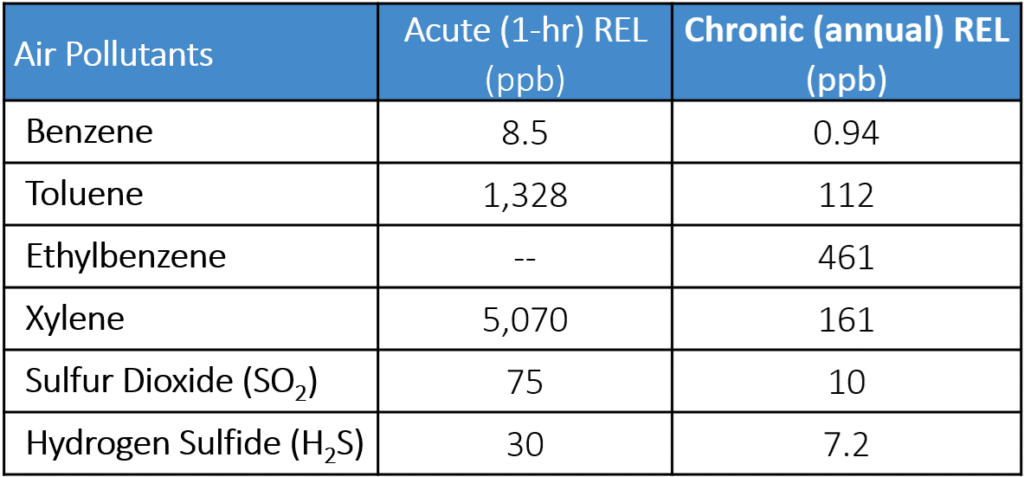
Related Links:
For more information about AB 1647:
Bill Text – AB-1647 Petroleum refineries: air monitoring systems. (ca.gov)
For more information about the District’s Air Monitoring Network:
Air Monitoring | Santa Barbara County Air Pollution Control District (ourair.org)
Air Pollution and our Health | Santa Barbara County Air Pollution Control District (ourair.org)
Today’s Air Quality & Forecasts | Santa Barbara County Air Pollution Control District (ourair.org)
